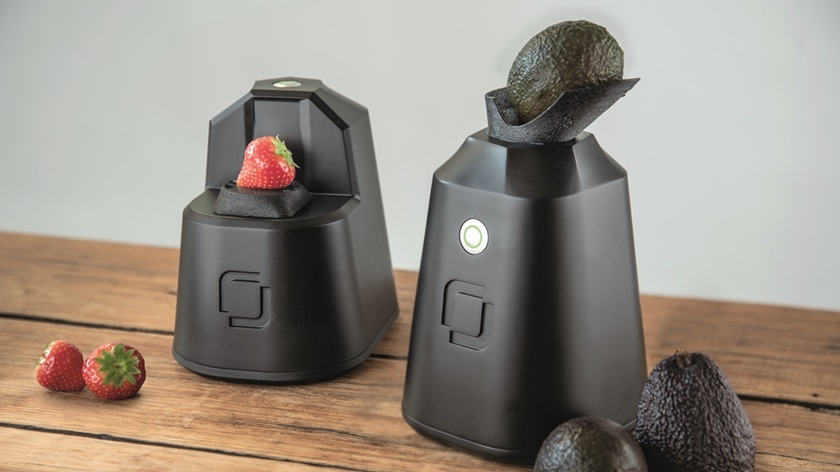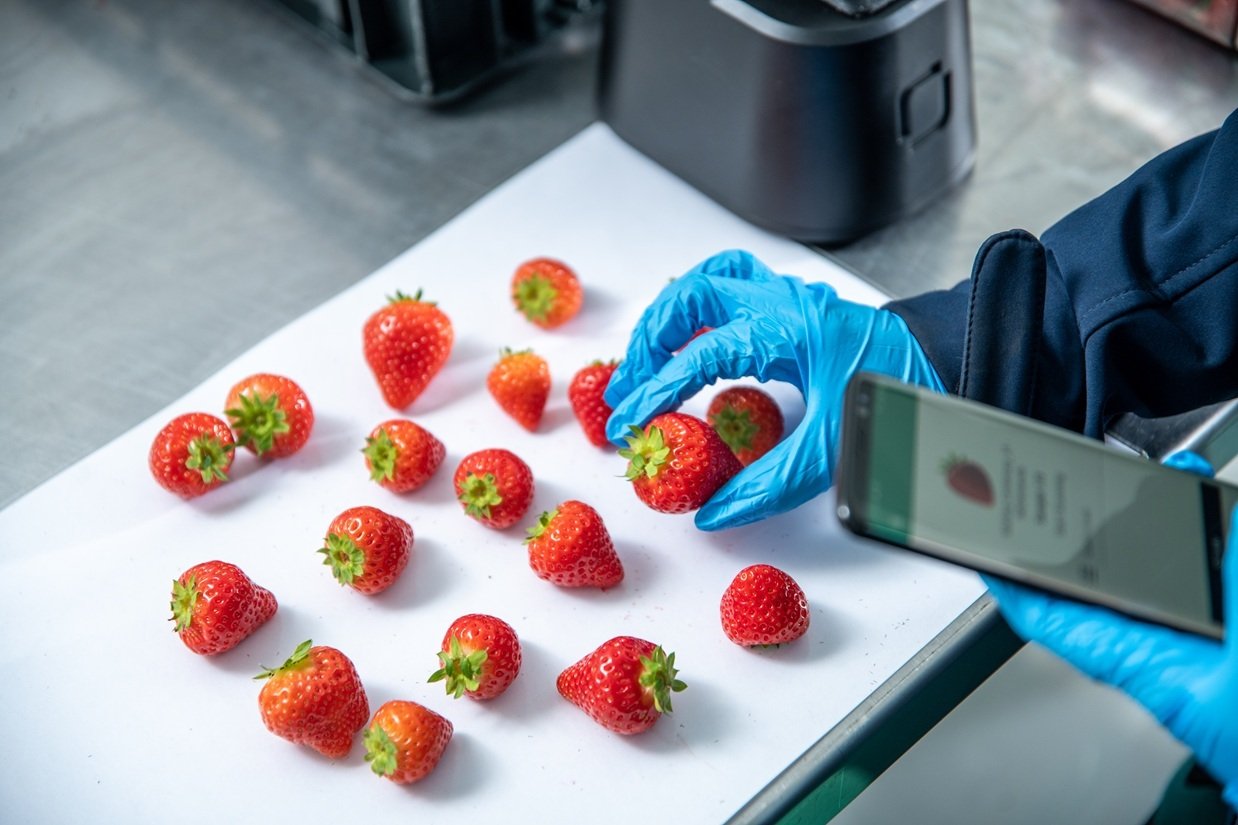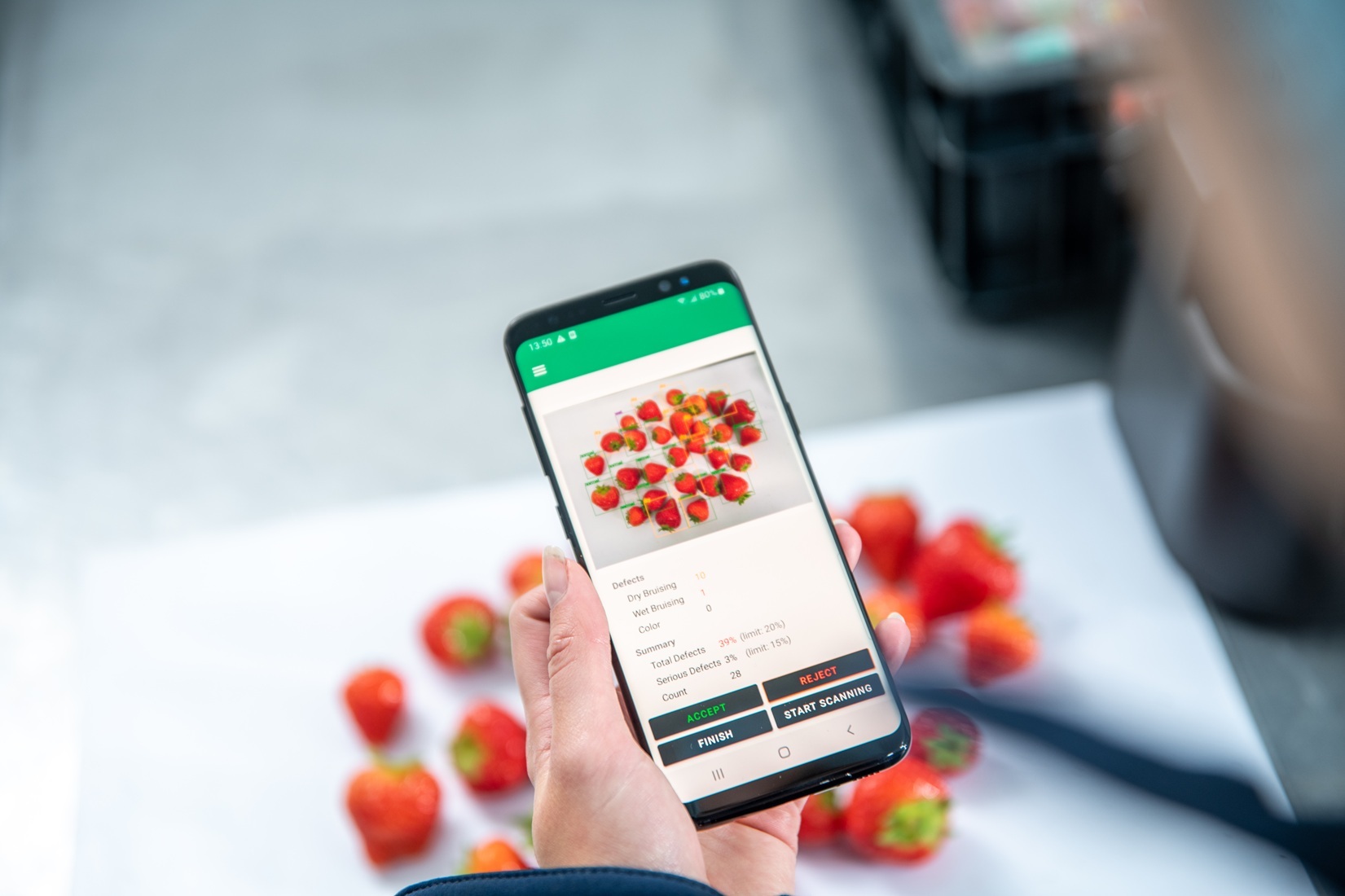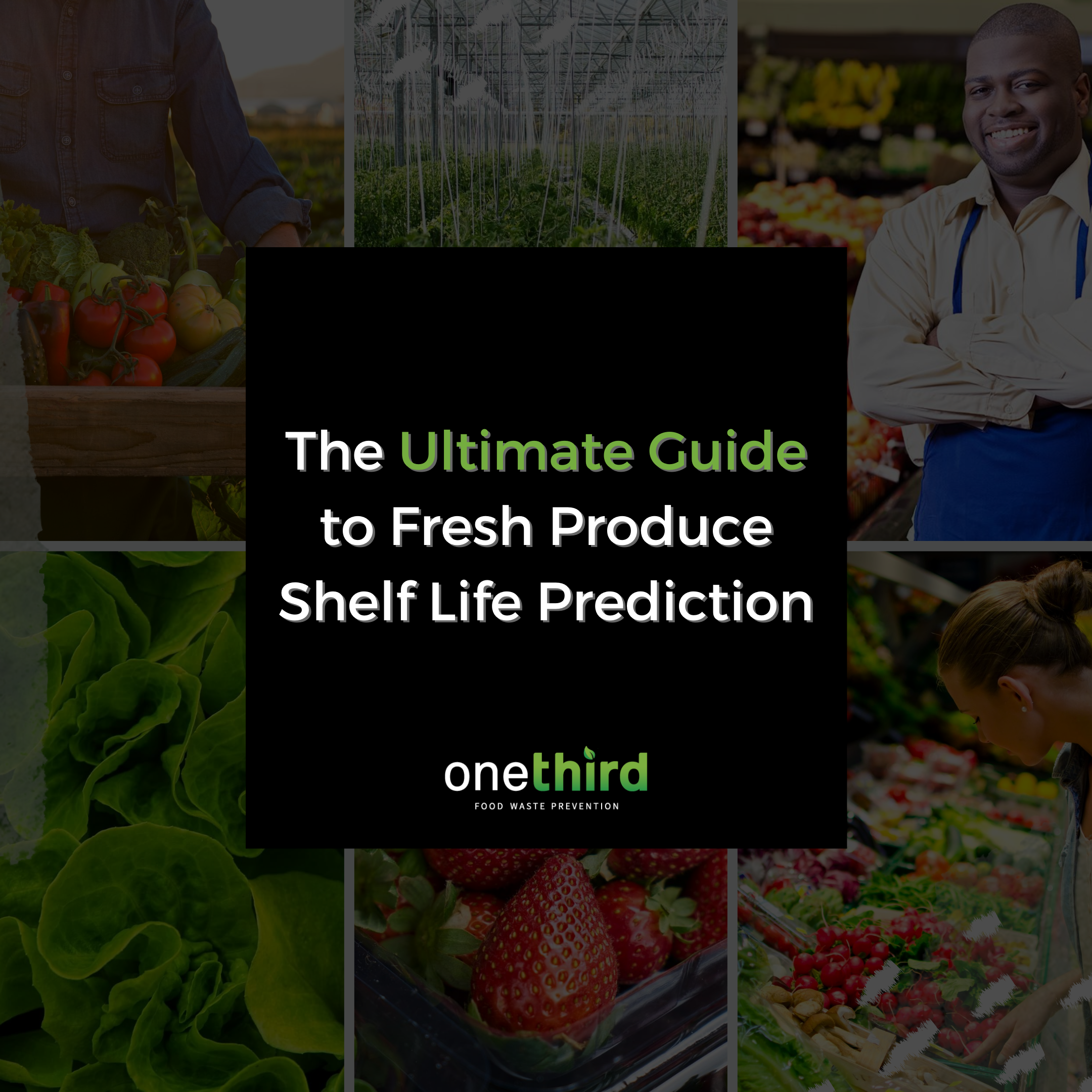
16 Jun 2023
doorOneThird
Chances are you are determining the shelf life of your products in some way today. You may have heard of shelf-life prediction before, but there’s a lot of confusion over the different approaches and applications. The purpose of this ultimate guide is to discuss all aspects of fresh produce shelf life prediction and how to start reaping the benefits from it.
Sections
- What is Shelf Life Prediction?
- Assessing Your Current State
- Common Issues Shelf Life Prediction Can Solve
- Shelf Life Prediction Methods
- Implementing Shelf Life Prediction
1. What is Shelf Life Prediction?
Definition
Shelf life prediction is a method that determines how long an item lasts until its “end of life”. For fresh produce, this usually means the time until an item is no longer acceptable to sell to a consumer. This is different from shelf life extension, which essentially prolongs the shelf life of an individual item.
Benefits
Knowing shelf life enables better decision making. For example, you can know which batches will survive a long-haul shipment and which should be sent locally. For exporters, knowing shelf life helps you ensure the products you ship will be fresh when the customer receives it. Understanding the shelf life of your produce helps to prevent food loss and waste, reduce costs, and improve freshness.
How it Works
Shelf life prediction methods collect data about fresh produce and use algorithms to estimate when it will reach “end of life”. Some can even do this in under one second.
These parameters can include:
- Brix
- Ethylene
- Taste
- Bruising
- Firmness
- Color
- Visual defects
- Growing conditions
- Temperature
- Humidity
- And more
Technology You Can Use to Predict Shelf Life
There are five major methods for predicting shelf life (which we will cover in more detail in Section 4):
- Static testing
- Temperature and humidity monitoring
- Chemical analysis
- Imaging
- Spectroscopy
OneThird uses spectroscopy to quickly analyze the biochemical processes inside fruits and vegetables. You can see shelf life prediction in action in the video below!
How Shelf Life Prediction Technology is Better Than Manual Methods
The traditional method of shelf life prediction is simply to leave items on a shelf and see how long it takes to reach the “end of life.” This is slow, destructive, and does not account for batch-to-batch shelf life variation. By the time 20 days have passed, the batches entering your warehouse are likely to have a different shelf life due to temperature and soil changes. Not to mention, every batch is subjected to different temperatures. When predicting shelf life accurately, it is important to include the factors that affect shelf life in your measurements. New shelf life prediction methods do just that, as they use AI to analyze all the raw data and output what the shelf life is. This is rapid, as well. What once took 10 days can now be done in one second and on every batch, non-destructively.
Action
Assess how you currently measure shelf life in your business.
- Do you leave products on a shelf to rot?
- How many labor hours does this take?
- What information are you missing out on?
- What information have your customers asked you for with regards to freshness?
2. Assessing Your Current State
Why Preventing Food Waste is The Most Beneficial Method
You don’t grow food just for the sake of it ending up being used in methods at the bottom of the food recovery hierarchy. Food is grown to be eaten. It’s expensive to grow, water, harvest, cool, package, and transport food that’s never eaten. Further, if you are paying for anaerobic digestion and composting then it’s costing you even more. These methods are better than dumping food into a landfill, they are still towards the bottom of the EPA’s Food Recovery Hierarchy. This means they are less preferred in terms of cost savings and socio-economic benefits.
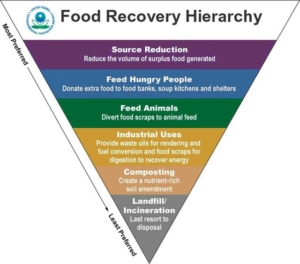
Source: EPA
As seen in the above diagram, you should prioritize methods that focus on preventing food waste and feeding hungry people because they provide the largest socio-economic impact. Sending to a landfill, composting, and anaerobic digestion may seem easy, but all will end up hurting your business more.
Determining Your Volume of Food Loss/Waste
Many businesses report food waste as only the food that is sent to a landfill. While technically this is true, a much better approach is to assess the amount of surplus food you have. By using this approach, you can determine the root causes of food loss/waste. Many businesses think they can simply divert food from landfills and compost it or anaerobically digest it. And if you don’t measure waste diversion at all, now is the time to start. You cannot improve what you cannot measure.
How Much Can Businesses Save By Preventing Food Waste?
The cost of food loss and waste can be substantial. ReFED estimates that 1 ton of wasted food costs around $5,000 at the retail level. Walmart’s freshness management solution, Eden, is expected to save the business $2,000,000,000 in food waste over 5 years. That’s a lot of zeroes.
A Smaller-Scale Example
For this example, let’s assume your yearly food surplus is a modest 3,000 tons. If only 40% of this is fresh produce and you would only expect to prevent 50% of waste, that’s still about $3,000,000 per year saved!
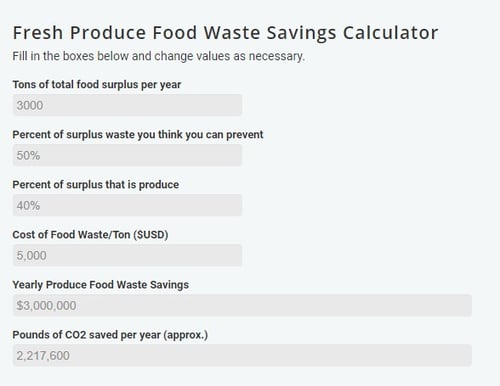
Source: Fresh Produce Food Waste Savings Calculator
Action
How much money can you save by preventing food waste? Determine the following metrics for your business to find out:
- How many tons of surplus food do you have per year?
- What percentage of this surplus food is fresh produce (by weight)?
- What is the cost per ton of your food? (ReFED estimates this as $5,000/ton)
- What percentage of surplus waste do you think you can prevent?
Now use the Fresh Produce Food Waste Savings Calculator to see how much money and CO2 emissions you can save by reducing food waste:
3. Common Issues Shelf Life Prediction Can Solve
Stakeholders in every part of the value chain can benefit from shelf life prediction. This technology gives you an “objective standard” for easy quality discussions between suppliers and buyers. For example, a grower-shipper and a retailer can agree that the products they exchange will have a minimum of seven days of shelf life. With this clear, objective goal, the grower-shipper can assess shelf life before shipping to ensure no food will be rejected or wasted. The retailer can ensure that the produce they accept is fresh enough for customers to buy and consume before it rots and becomes waste.
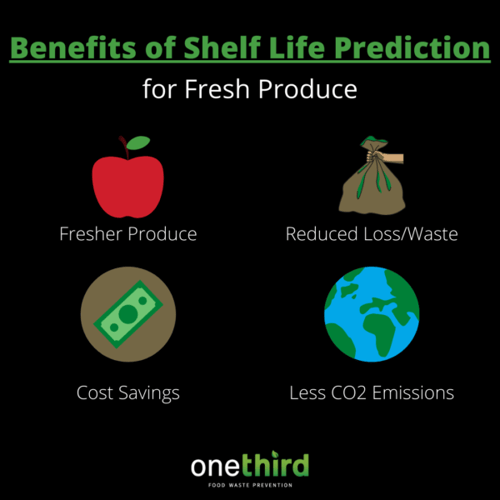
Growers
With every shipment, growers are putting their reputation on the line. Rejected shipments not only make their business look bad, but they are also expensive to deal with. Growers can decide which customers to send different batches to (dynamic routing) and ensure that their products will survive a shipment.
Distributors
Distributors may think they run a FEFO (first expiring, first-out) operation, but how can they really know? If there isn’t a repeatable, objective measurement in place then this process is not optimized and it is causing unnecessary food loss. By knowing the shelf life of every batch, distributors can optimize product freshness and have happier customers.
Wholesalers
You keep produce from numerous suppliers in your warehouse and maybe even have some international exports. How can you be sure that what you’re sending will survive a shipment? Using shelf life prediction, wholesalers compare the shelf life of a batch to the minimum requirement days of freshness. For example, if you have an export to the U.K. that takes 11 days you can ensure your products will last 11 days (plus however many days of freshness your customer should have).
Retailers
Retailers can ensure analyze incoming produce to ensure it meets their freshness and shelf life standards. They can also equip produce managers with the ability to analyze individual fruits and vegetables. Employees can make decisions based on freshness and not inaccurate and confusing “best by” dates. It’s rare to have customers contact you when they receive great produce from you. You will always hear about it if your produce rots after one day. You can also implement dynamic pricing with an objective measurement for freshness to adjust the price- rather than the manufacturer’s given date.
Other Applications
There are numerous parts to the complex food supply chain. Because shelf life prediction is so new, there are many undiscovered applications of this technology. In any instance where fruits or vegetables exchange hands or are inspected for quality or freshness, you may be able to benefit from shelf life prediction.
Action
- Brainstorm five ways you could benefit from knowing the shelf life of your products in your specific business.
- Is it for standing out from competitors?
- Protecting your reputation?
- Moving to FEFO?
4. Shelf Life Prediction Methods
Each of the five major methods of shelf life prediction has its target applications. Spectroscopy is currently the only shelf life prediction method that can predict shelf life based on intrinsic quality.
1. Static Testing
Static testing is the most archaic method of determining shelf life. It involves leaving items on a shelf to rot and counting the days until they reach their “end of life.” It cannot account for variation between batches and is slow to perform. Plus, if you accept shipments from hundreds of orchards how could you possibly test the shelf life of every batch? Because shelf life prediction technology has not been accessible until now this is still the most commonly used method right now.
2. Temperature and Humidity Monitoring
Temperature and humidity conditions play a large role in affecting the shelf life of produce. You can predict the shelf life of a certain batch by comparing the temperature profile to that of historical batches. However, you cannot simply measure the temperature of fruit and know the shelf life- you need to know the entire temperature history.
3. Chemical Analysis
Analyzing ethylene, a hormone that some fruits and vegetables release during ripening, can help you understand when products are ripening. For example, if you notice a spike in ethylene you can determine that it will probably take around eleven days for your fruit to rot. This can help you decide which batches to ship out first. Also, color-changing stickers can help indicate freshness for consumers.
4. Imaging
Imaging is great for pointing out defects that may be indicators of ripening. You can also analyze images outside the visual spectrum (hyperspectral) to show defects inside fresh produce that the human eye cannot see. Hyperspectral imaging can show the internal ripening process of fruits and vegetables. Correlations between bruising and end of life can be used as a shelf life predictor.
5. Spectroscopy
The only method that can use intrinsic quality to predict shelf life is spectroscopy. Every fruit and vegetable has a unique “spectral fingerprint.” Algorithms compare this spectral data to existing data for that variety to predict shelf life. It’s as simple as holding a device against an item for only one second as near-infrared (NIR) light enters the item. It’s non-destructive to the fruit or vegetable and not harmful to humans.
You can measure just a few items in a batch to have a good idea of the shelf life is for that batch. Spectroscopy can be used at any point along the journey from farm to fork. Any employee can pick up a device and determine shelf life.
Capabilities of Each Method
The benefits and ideal application for each method vary. Below is a matrix showing the capabilities of each shelf life prediction method.

It’s worth noting that combining methods may be the best option, as more data leads to improved accuracy. Combining the intrinsic quality data with a temperature profile will provide a more complete picture of a product’s life.
Important Features to Look For
For any technology, it’s important to make sure it will provide a return on your investment. If a solution is adding too many unnecessary extra processes or taking a large amount of labor time, it may be hard to break even. The diagram below briefly shows three important features of any shelf life prediction solution.

Action
Brainstorm 3 benefits that you would have from implementing each method of predicting shelf life.
- What problems would it solve?
- How much time could you save?
- What could you validate by knowing shelf life?
5. Implementing Shelf Life Prediction
Starting a Trial
For new technologies, it’s common to first implement a trial (or at least analyze a case study). Because you’ll initially be adding the cost of the technology to the bottom line you want to make sure it provides a return on your investment. But rest assured, ReFED has said that “[food waste] prevention solutions offer the highest returns to retailers” (ReFED Retail Food Waste Action Guide).
Evaluating KPIs
The key to evaluating new technology is to have specific and measurable KPIs (key performance indicators). For shelf life prediction technology, it may be cost savings and the accuracy of predictions compared to current methods. Having this data will enable you to decide if you should move forward with the solution or try another one.
Scaling Up
Once you have proven the technology you’re using provides a return on investment then it’s time to scale up the implementation. You can increase the number of sites, number of produce varieties, number of employee licenses, and more. By scaling the implementation of shelf life prediction, you will also be scaling your food loss and waste savings.
Implementing Across the Supply Chain
The fresh food value chain is complex and the journey of fruits and vegetables from farm to fork involves many stakeholders. Suppliers aren’t able to track their products after their customers receive them. That’s why it’s important to connect product data between all parties and why blockchain is expected to be so useful in the future. The best shelf life prediction solutions, like OneThird’s, have a cloud platform where you can analyze objective product lifecycle data. This data is key to improving freshness management.
Integrating With Your Existing Processes
For technological solutions, it is typically best to have them fit into your existing processes where possible. This reduces complexity and improves utility. Obviously, your employees aren’t currently holding a handheld shelf life scanner to a set sample of products yet. So you may add some steps. However, the steps you add should all contribute to labor and food waste savings. It can even remove some steps to simplify your processes (like static shelf life testing). Because shelf life prediction technology is so flexible, it can often be “plugged in” to your existing procedures.
Integrating With Other Data Sources
At the core of shelf life predictions are algorithms that analyze multiple data sources. By adding more data sources, these algorithms can become more accurate and give a more complete picture of a product’s lifecycle. For example, adding temperature/humidity data to an algorithm based mainly on spectroscopy can account for shipping conditions more holistically. Because this technology is so new, this hasn’t been done much yet in the industry. However, this is a logical next step and one that is on the roadmap for most companies.
How OneThird Can Help You Predict Shelf Life
OneThird’s mission is to become the objective quality standard from farm to fork. As Friends of Champions 12.3, we are working to halve global food loss and waste by 2030. We offer handheld spectroscopy scanners, shelf life algorithms, and a cloud platform for analyzing data. We develop customized shelf life prediction solutions so any business in the value chain can reduce food waste, improve freshness, and save money.
The Future of Shelf Life Prediction
Increased Automation
With thin margins in the fresh food industry, automation is a straightforward way of reducing costs. With shelf life prediction, you can automate several processes. This may include sorting lines, shipping allocations, and quality assessments.
Objective Taste and Nutrition Standards
The goal of any quality measurement is to ensure customers receive a good product. When it comes to food, customers care just as much about taste and nutrition as they do freshness and physical appearance. It’s possible that in the future, there will be reliable technology to give objective measurements for taste and nutrition. Produce suppliers can then measure these two metrics to ensure they have the happiest possible customers.
Consumer Products
Like the computer in the ’80s, once a technology is proven to work and seen as useful then it can move into the consumer space. The same might apply for shelf life prediction. Shoppers may soon have handheld spectrometers they can use in a supermarket to assess fresh produce. Retailers will have more demand to provide the best taste, nutrition, and freshness as a result.
Resources
Sign Up For the OneThird Food Waste Prevention Newsletter
For Value Chain Professionals
- 5 ways food spectroscopy is already used
- 9 methods to extend the shelf life of fresh produce
- 11 methods to reduce food waste for retailers and distributors
- Different ways AI is used in the food system
- Shortcomings of cold chain temperature monitoring
- Walmart’s Eden to save $2 billion in food waste (and how to replicate it)
- What is dynamic routing and how does it work for fresh produce?
- What is objective quality control?
- Why you need to use FEFO for fresh produce

